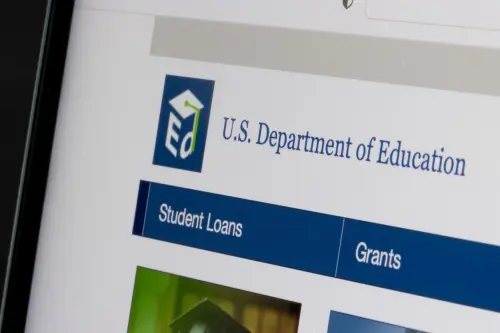The authors submitted a comment letter on October 24, 2025, in response to a request for information from U.S. Senator Bill Cassidy, M.D., chair of the Senate Health, Education, Labor, and Pensions (HELP) Committee. The request was entitled, “Improving College Cost and Value Transparency for Students and Families.” Below, we summarize our comments; you can read the full comment here.
Higher education has long been a key driver of economic mobility and workforce skill development. But alongside the recognition of the many individual and societal benefits from postsecondary education has been a growing focus on the individual and societal costs of financing higher education. Too often, those costs are opaque for prospective students.
Students frequently make the largest financial decision of their lives with incomplete information about the total costs they might incur while pursuing a credential. This is largely because colleges use complex strategies to award financial aid that is targeted to each student’s unique situation. While this approach attempts to award scarce financial aid dollars in the most effective way to address students’ financial constraints and maintain institutional stability, this customized approach to aid packaging makes it nearly impossible for students to understand how much a credential will cost at any given institution until after they have been accepted.
We recommend several approaches to produce better information about the costs and returns to college and to better disseminate that information to students and the intermediaries who advise students:
- Improve data sharing across federal agencies: A federal student unit record system would enable calculating net price and earnings for all students, not only those receiving federal aid. In addition, it would facilitate the calculation of value-added measures for institutions by accounting for students’ pre-entry characteristics.
- Ensure sufficient staff capacity to leverage federal data to support accountability and policymaking: The Department of Education (ED) needs additional capacity to analyze data on student outcomes. Even before the recent Reduction in Force (RIF), ED had insufficient capacity to make full use of available data. To leverage the data described above, we recommend additional hiring in NCES, the Office of the Chief Economist, and other data-analytic units at ED.
- Better account for variation in degree costs: Existing net price calculators and cost estimates make several assumptions that may not be true for all students. For example, college reporting on average tuition rarely account for differential tuition charged for certain majors. Federal data collections should add items to flag whether institutions charge differential tuition and work to communicate that to students via the College Scorecard and other student-facing websites.
- Account for how time-to-degree affects the total cost of a degree: Many students take significantly longer than the advertised time to complete a credential. The six-year graduation rate for the cohort of students starting a bachelor’s degree in 2016 was about 65%, but the four-year graduation rate was only 49%. The College Scorecard also gives students an inflated sense of graduation rates by reporting the eight-year graduation rate. Taking longer to complete a credential costs more. Students should have a clear understanding of how long a credential will take to accurately estimate the total cost of college.
- Focus on institutional accountability and Title IV eligibility to ensure bad actors do not have the ability to receive federal student loans: The financial aid system is notoriously complex, and new college students have little direct experience with loans. In an environment where extensive financial aid and loans are being offered for consistently poor performing programs, consumer-facing interventions will only go so far. Restricting borrowing for institutions or programs that do not pay off is necessary—alongside financial education—to protect borrowers and taxpayers alike.
While we applaud a focus on improving cost and value transparency for students and families, we know that information for students is often not enough. Deciding what post-secondary education to pursue and how to finance it will continue to be a complex and challenging task, especially for first-generation students. Many students rely on a range of intermediaries to guide them on their journey to and through college. Transparency efforts may ultimately benefit students through those intermediaries, whether those are high school counselors guiding students to their next step, university financial aid administrators discussing loan tradeoffs, or researchers developing and testing different outreach strategies to students. Any efforts to enhance cost and value transparency should also consider those who advise students and how best to equip these advisors to support students to and through college.
The Brookings Institution is committed to quality, independence, and impact.
We are supported by a diverse array of funders. In line with our values and policies, each Brookings publication represents the sole views of its author(s).






Commentary
Comment on college cost and value transparency
November 19, 2025